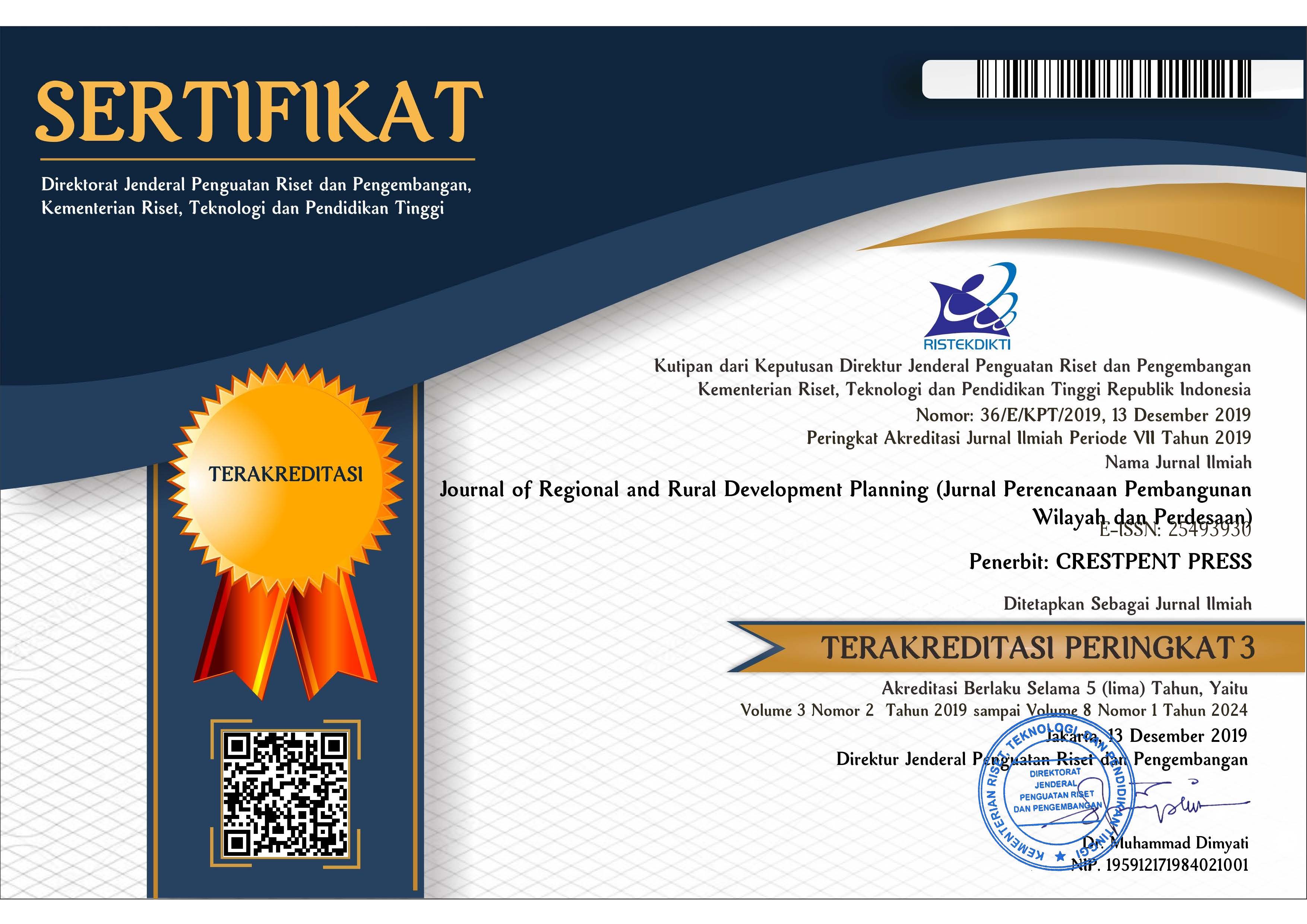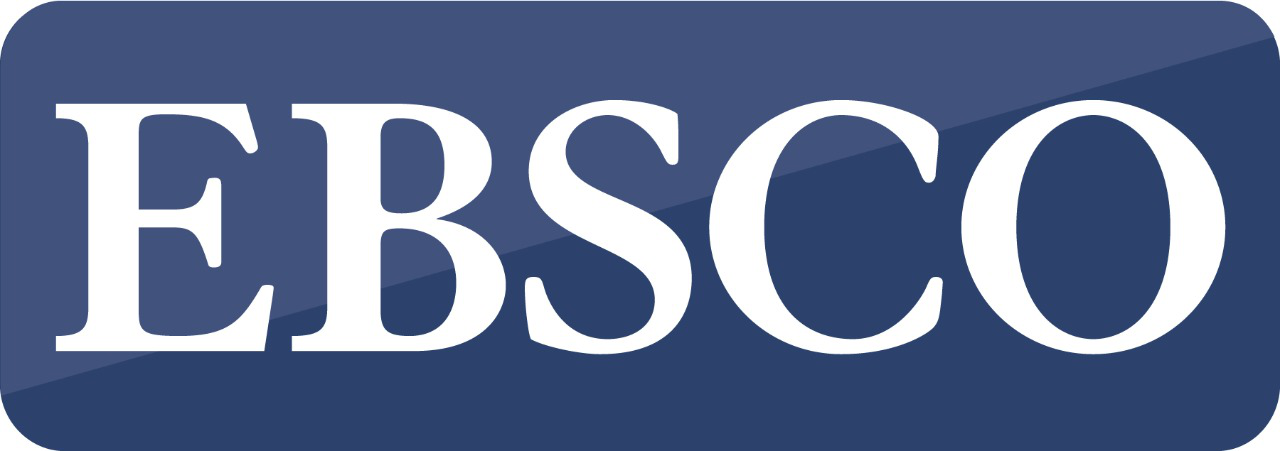Dampak Ekonomi dan Strategi Pengembangan Wisata Danau Sentani di Kabupaten Jayapura
Abstract
Economic Impacts and Development Strategies for Lake Sentani Tourism
in Jayapura Regency
Lake Sentani tourism is a type of natural tourism. Management of the natural tourism is in the form of collaboration between the local government and local communities by relying on the beauty and panorama of the nature. Aims of this study are (1) to estimate the economic value of Lake Sentani tourism which is expected to have an impact to the local economy and benefit the surrounding communities, and (2) to formulate effective strategies for managing the natural tourism. Data collection was conducted through field survey and interview. Data used were on tourist expenditure, labor, business income, number of tourists, and perceptions and preferences of stakeholders towards the development of Lake Sentani tourism. The sampling method used was the purposive sampling technique with a total sample of 133 persons. The method of analysis used were Individual Travel Cost Method (ITCM), multiplier effect, and Analytic Hierarchy Process (AHP). Analysis results show that Lake Sentani tourism had a low economic impact on the local economy development and communities around the area with a value of Keynesian income multiplier of 0.93. In order to develop Lake Sentani tourism, the proposed strategy is ecologically based, supported by the role of local government stakeholder as regulator who are responsible for advancing the welfare of business people involved in all activities related to Lake Sentani tourism.
References
Chidammodzi, C. L. & Muhandiki, V. S. (2015). Development of indicators for assessment of Lake Malawi Basin in an Integrated Lake Basin Management (ILBM) framework. Nagoya University. International Journal of the Commons, 9 (1), 209–236
Cooper, C., Fletcher J, Gilbert, D., Shepherd, R., & Wanhil, S. (1998). Tourism: Principles and Practice. Second Edition. Addison-Wesley, Longman.
Desta, Y. (2018). Analysis of Economic Value of Lake Ziway: An Application of An Application of Contingent Valuation Method. Journal of Resources Development and Management, 40, 55–66.
Dritasto, A. & Anggraeni, A. A. (2013). Analisis Dampak Ekonomi Wisata Bahari Terhadap Pendapatan Masyarakat di Pulau Tidung. Jurnal Online Institut Teknologi Nasional Reka Loka, 1 (1), 1–8.
Dinas Pariwisata dan Kebudayaan Kabupaten Jayapura. (2019). Jumlah wisatawan nusantara dan mancanegara: Jayapura.
Endah, H. N. & Nadjib, M. (2017). Pemanfaatan dan Peran Komunitas Lokal dalam Pelestarian Danau Maninjau. Jurnal Ekonomi dan Pembangunan, 25 (1), 55–67
Fauzi, A. (2014). Valuasi Ekonomi dan Penilaian Kerusakan Sumberdaya Alam dan Lingkungan. IPB Press.
[META] Marine Ecotourism for Atlantic Area. (2001). Planning for Marine Ecotourism in The EU Atlantic Area. University of The West of England, Bristol.
Mungmachon, M. R. (2012). Knowledge and Local Wisdom: Community Treasure. International Journal of Humanities and Social Science, 2 (13), 174–181.
Ningrum, E. (2012). Dinamika Masyarakat Tradisional Kampung Naga di Kabupaten Tasikmalaya. Jurnal Mimbar, 28 (1), 47–54.
Prasetya, D. B. & Ansar, Z. (2017). Pengembangan Desa Wisata Berbasis Community Based Tourism Pada Kawasan Danau Ranau Lumbok Seminung Lampung Barat. Institut Teknologi Sumatera. Jurnal Plano Madani, 6 (1), 60–72
Ramadanta, A. & Basri, I. S. (2011). Pendekatan Ecoregion Dalam Pengembangan Kawasan Wisata Studi Kasus Penataan Kawasan Wisata Danau Poso. Jurnal ruang, 3 (1),1–13.
Ritonga, D. A (2018). Nilai Ekonomi Danau Naga Sakti Berdasarkan Pendekatan CVM untuk kegiatan wisata di Desa Dosan Kecamatan Pusako Kabupaten Siak. Pekan Baru: Universitas Riau.
Rustiadi, E., Saefulhakim, S., & Panuju, D. R. (2011). Perencanaan dan Pengembangan Wilayah. Yayasan Pustaka Obor Indonesia.
Saaty, T. L. (1994). How to Make a Decision : The Analytic Hierarchy Process. Institute for Operations Research and the Management Science, 6 (24), 19–43.
Siregar, H. & Dwi, W. (2008). Dampak Pertumbuhan Ekonomi Terhadap Penurunan Jumlah Penduduk Miskin. Institut Pertanian Bogor.
Siregar, R. A., Winanegara, H. W., & Hermantoro, H. (2018). Pengembangan Kawasan Pariwisata Danau Toba, Kabupaten Toba Samosir. Tata Loka, 20 (2), 100–112.
Soleh, A. (2017). Strategi pengembangan potensi desa. Jurnal Sungkai. 5 (1), 32–52.
Tarigan, R. (2007). Ekonomi Regional: Teori dan Aplikasi. Bumi Aksara.
Yakup, A. P. (2019). Pengaruh Sektor Pariwisata Terhadap Pertumbuhan Ekonomi di Indonesia. Tesis. Universitas Airlangga
Walukow, A. F., Djokosetiyanto, D., Kholil, & Soedarma, D. (2008). Analisis Strategi Pengelolaan dan Peranan Lembaga dalam Rangka Konservasi Danau Sentani Jayapura. Media Konservasi, 13 (1), 21–31.
Widhijanto, A. A. & Tisnaningtyas, E. Y. (2018). Identifikasi Kawasan Permukiman Pendukung: Analisis Proximity Pengembangan Destinasi Wisata Danau Toba. Jurnal Neo Teknika, 4 (1), 11–19.
Copyright (c) 2020 Journal of Regional and Rural Development Planning (Jurnal Perencanaan Pembangunan Wilayah dan Perdesaan)

This work is licensed under a Creative Commons Attribution-ShareAlike 4.0 International License.




.png)














